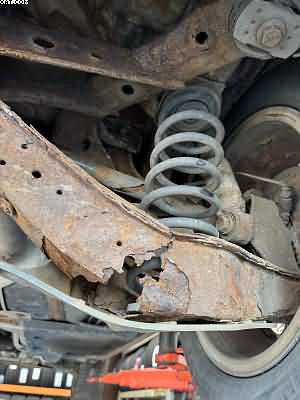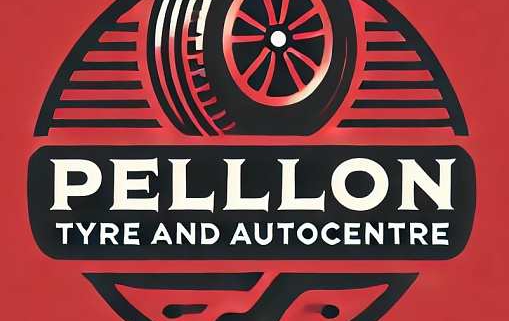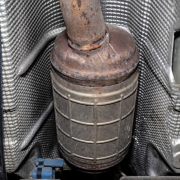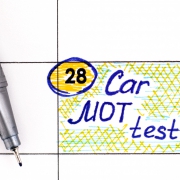MOT Test Advisories
Table of Contents
MOT Test Advisories
MOT Test Advisories
Also, the following advice became important when a Skoda car was presented to us with a broken suspension arm. When we looked into it, we found that driver had ignored previous MOT Test Advisories, before the rusty part finally snapped . Also, it would have been less expensive if the guy had repaired the car earlier, preferably after the advisory was issued.

Comprehending MOT Advisories:
Their Significance and The Importance of Ignoring Them
A common and crucial aspect of owning a car in the UK is the annual MOT (Ministry of Transport) test, which determines how safe and roadworthy your vehicle is. This test determines whether your car satisfies the minimal safety requirements needed to operate a motor vehicle. Most drivers are worried about whether their car will pass or not, but the advisories are an important component of the MOT that many people forget about.
MOT Advisories: What Are They? MOT Test Advisories
A MOT advisory is a notation that the MOT tester adds to your car to let you know about a fault that isn’t bad enough to fail the test, but could cause problems down the road. These alerts serve as a kind of warning, indicating that while a certain component of your car may be safe for the time being, you should nonetheless pay attention to it.
Advisories can address a variety of topics. Your brake pads, for instance, may be noted to be thin but still have enough life left to pass the test. Alternatively, they may say that although your tyres are approaching the acceptable tread depth limit, they are not quite at the point where they need to be replaced. Small exhaust leaks, mild rust, or worn suspension parts are also frequent warning signs.
Why Is It Important to Follow Advisories? MOT Test Advisories
It’s easy to ignore cautions, particularly after passing the MOT and exhaling with relief. But disobeying these cautions can eventually result in more serious issues, both practically and metaphorically.
1. Avoiding Future Mistakes: Advisories serve as preliminary alerts. You can prevent these minor problems from getting worse and maybe leading to the failure of your car’s next MOT by taking care of them as soon as possible. For instance, by the time of your next test, those somewhat worn brake pads stated in the advisory might be totally worn out, which could result in a failure and possibly greater repair expenses.
2. Safety First: The primary goal of the MOT test is to make sure that cars are safe to drive. Your safety may still be at risk even if an advisory issue isn’t severe enough to cause your automobile to break down right now. For example, a small exhaust leak could get bigger with time and allow harmful gases to enter the interior of your car.
3. Cost-Effective Maintenance: While auto repairs can be pricey, problems are frequently easier and less expensive to treat when discovered early. For instance, it may seem wasteful to replace tyres when they have poor tread but are still legal. Waiting until they are totally worn out, however, may result in more costly repairs if you damage your suspension or wheels in the process.
4. Peace of mind: It’s comforting to know that your car is in good shape. You may lessen the tension and anxiety that come with wondering if your automobile is safe to drive by responding to advisories as soon as they appear and having assurance that your vehicle is always roadworthy.
Typical MOT Warnings and How to Handle Them—MOT Test Advisories
Here’s a closer look at some of the most typical warnings you may come across, along with some action items to consider:
Tyre Wear: It is advisable to replace your tyres as soon as possible if your MOT Test Advisories, indicates that they are getting near the permissible limit. In addition to putting you at risk for a citation, worn tyres also make your car less manoeuvrable, particularly in wet weather.
Brake Wear: Common warning signs include thin brake pads or slightly deformed discs. Check your brakes frequently, and if the pads are getting low, think about replacing them. This may prevent you from later needing to replace the discs, which would have been more costly repairs.
Rust: It’s common to observe surface rust as a warning. Rust may not seem like a significant concern right now, but it may spread and seriously harm a structure. Early detection and a small amount of care can save a future, expensive repair.
Exhaust Issues: Another common warning concern is minor exhaust leaks. These leaks may worsen over time, producing potentially dangerous pollutants, increased noise, and decreased fuel efficiency. Fixing a tiny leak now is typically less expensive than replacing the exhaust system as a whole later.
Suspension Wear: Although somewhat worn suspension parts probably won’t break this time, they’ll probably keep wearing and might compromise the comfort and control of your vehicle. If necessary, think about getting them inspected and replaced.
Remember the Warnings
Although passing the MOT test is an accomplishment, it’s crucial to heed the MOT Test Advisories, warnings. They are there to assist you in maintaining the state of your vehicle, preventing more serious issues down the road, and making sure you always drive safely.
Recall that even if anything didn’t lead to your car breaking down this year, it might the next. It can save you money, keep you safer, and provide you with peace of mind to respond quickly to advisories. Take the MOT Test Advisories, carefully the next time your MOT report has a few issues; your automobile is trying to inform you that it needs some attention.
- BMW Mini Wheel bearing-Or just tyre noise?
- Corsa Broken Spring Replaced
- DVSA on MOT fraud
- VW Up with Seized brakes
- Nissan Navara clutch replacement





